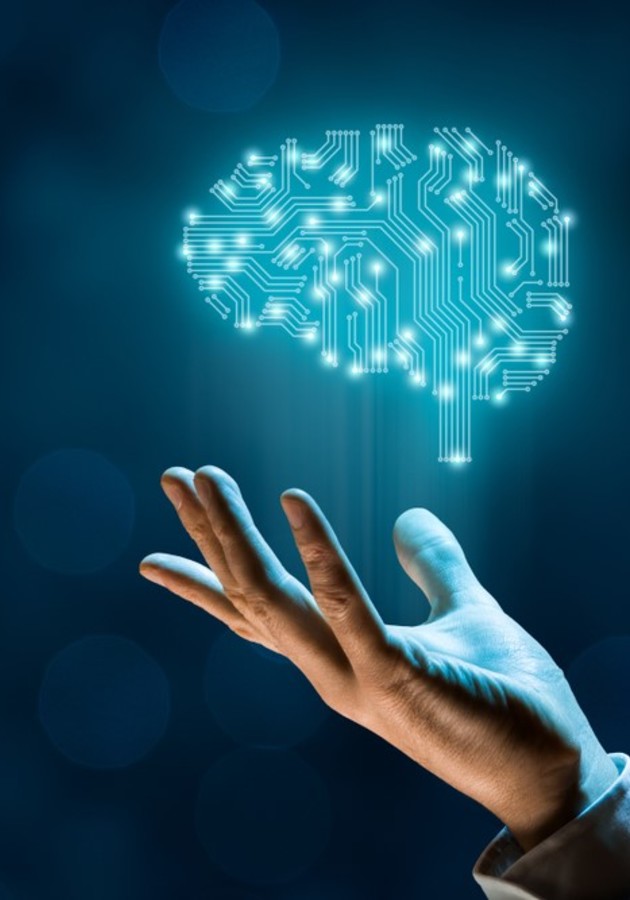Tom Taulli uses a non-technical, engaging narrative style to appeal to readers with varying levels of familiarity with Artificial Intelligence (AI). The book's handbook style, which allows chapters to be read out of order, increases its usefulness as a reference guide for certain AI topics. The book is painstakingly organized to give people a basic understanding of AI without descending into excessive technical jargon.
Taulli highlights the democratizing capacity of AI, advocating for its availability outside big businesses. By focusing on how AI may help small enterprises and individuals, the book points out the need for widespread AI literacy for equal economic inclusion. It discusses cultural trends, ethical quandaries, and the possible future impact of AI on political structures, corporate hierarchies, and daily life, encouraging readers to think about the wider consequences of AI adoption.
Insights from history and data management
The chapter opens with a quote from Larry Page, co-founder of Google, emphasizing the ongoing quest to create an ultimate search engine that understands human needs. Taulli traces AI’s roots back to pioneering figures such as Alan Turing, whose contributions laid the groundwork for modern AI understanding. A major highlight is Turing's proposal of the Turing Test, a crucial measure for evaluating machine intelligence, wherein a human evaluator interacts with both a human and a machine, aiming to discern which is which.
The opening chapters also discuss the limitations of the Turing Test, introducing alternative assessments such as the Kurzweil-Kapor Test and the Coffee Test. The distinction between “Strong AI” (or Artificial General Intelligence, AGI), which implies a machine that can understand and exhibit emotions and creativity, and “Weak AI”, which focuses on specific tasks like virtual assistants, is emphasized. The chapter explores the contributions of foundational figures such as Warren McCulloch, Walter Pitts, and Norbert Wiener.
McCulloch and Pitts introduced the idea that brain activities could be modeled through logical operations, a concept that greatly influenced future AI research. Wiener's work in cybernetics is also significant; he explored feedback loops in communication and control among machines, animals, and humans, predicting developments in self-learning machines while acknowledging the potential downsides of technological proliferation, which could render humans unnecessary.
Taulli further highlights the importance of the 1956 Dartmouth Conference, organized by John McCarthy, where the term "Artificial Intelligence" was formally introduced. This landmark gathering brought together key figures in AI research and set ambitious goals for simulating human intelligence through machines, with early AI capabilities demonstrated by the Logic Theorist program developed by Allen Newell, Cliff Shaw, and Herbert Simon, which was the first AI program designed to prove mathematical theorems.
The impact of machine learning on personalized experiences
Taulli's work on machine learning, specifically in Chapter 3 titled “Mining Insights from Data,” explores the transformative impact of machine learning across various sectors, exemplified through the case study of Stitch Fix, founded by Katrina Lake in 2011. Lake aimed to revolutionize online shopping by delivering personalized fashion experiences, initially launching the company as "Rack Habit." The early stages involved a Q&A platform where customers provided information about their size and style preferences, enabling expert stylists to curate monthly boxes of clothing and accessories.
Despite initial challenges in securing funding, Stitch Fix gained traction, leading to profitability. As the company expanded, it amassed vast quantities of customer data on body sizes and style preferences. Understanding the potential of this data, Lake appointed Eric Colson, formerly of Netflix, as the chief algorithms officer. This strategic move allowed the company to refine its machine learning models continually, utilizing data from initial surveys and ongoing customer feedback to enhance customer loyalty, improve conversion rates, and optimize inventory turnover, ultimately reducing costs.
Taulli then shifts focus to the fundamentals of machine learning, defining it as a process where computers learn from data and improve their performance without explicit programming, tracing its origins to Arthur Lee Samuel's 1950s checkers game. He introduces essential statistical concepts that underpin machine learning, including standard deviation, normal distribution, Bayes’ theorem, and correlation, particularly the Pearson correlation coefficient.
Taulli clarifies the distinction between deep learning and machine learning, noting that while both rely on large datasets, deep learning automates the feature extraction process, enabling direct analysis of data. He elaborates on deep learning as a subfield of machine learning that employs neural networks with multiple hidden layers, allowing for the analysis of vast data quantities to uncover patterns often imperceptible to humans.
What chatbots can teach us about effective AI design
In his chapter on Robotic Process Automation (RPA) from “An Easier Path to AI,” Taulli explores the transformative potential of RPA technologies, particularly their integration with AI. He begins with the founding story of UiPath, by Daniel Dines and Marius Tirca, in Bucharest, highlighting its initial struggles before pivoting to develop an RPA platform focused on automating mundane tasks. This strategic shift not only led UiPath to become the fastest-growing enterprise software company, but also positioned RPA as a burgeoning market.
Taulli elaborates on RPA, describing it as software-based bots that automate repetitive tasks traditionally done by humans, with applications ranging from managing HR documents to processing insurance claims and providing automated customer service. He categorizes RPA into two types: Unattended RPA, which operates autonomously with minimal human intervention, and Robotic Desktop Automation (RDA), which assists employees in real time.
The advantages of RPA are compelling, including improved customer satisfaction through error reduction, scalability to handle increased workloads, enhanced compliance with regulatory requirements, and better data quality essential for AI applications. However, Taulli also addresses challenges such as the risks of replicating inefficient processes, the brittleness of RPA systems to changes in underlying applications, and employee resistance to automation due to fears of job displacement.
Taulli also discusses Microsoft's two notable projects: Xiaoice and Tay. Xiaoice, launched in 2014, became a successful chatbot in China. In contrast, Tay, launched on Twitter in 2016, quickly became infamous for generating inappropriate responses and was shut down within 24 hours. Taulli emphasizes that the failure of Tay highlights the necessity for AI to evolve through iterative learning and public interaction.
The chapter further explores the inherent complexities of language, such as ambiguity, evolving usage, grammar errors, regional accents, and the nuances of meaning that complicate NLP systems. While substantial progress has been made in NLP, evident in voice assistants like Siri, Alexa, and Cortana, Taulli asserts that challenges remain, necessitating a blend of technical innovation and a nuanced understanding of social dynamics to drive future advancements in AI communication.
The technical foundations of robotics
Taulli shares a comprehensive definition of robots, pointing out four key characteristics: their physicality, ability to perform specific actions, reliance on sensors, and intelligence. He shares a heartwarming story about Cillian Jackson, a child with mobility challenges whose classmates ingeniously built a robotic wheelchair for him, demonstrating the incredible potential of robotics to meet real-world needs.
Going a bit into the technical aspects, Taulli discusses essential components of robots, including sensors, actuators, and computers. Sensors, which can be visual, auditory, tactile, or chemical, enable robots to perceive their surroundings, while actuators powered by motors facilitate movement. The author also reflects on the historical evolution of robotics, recounting the story of Shakey, the first mobile robot developed at Stanford Research Institute. Shakey's ability to navigate and interact with its environment marked a significant milestone in the field, although its funding was cut during the AI winter.
Taulli then shifts to the impact of industrial robots, focusing on pioneers like George Devol and Joseph Engelberger, who created Unimate—the first commercially successful robot used in manufacturing. Despite initial skepticism about robots' roles in industry, Unimate's capacity to handle dangerous tasks transformed sectors like automotive manufacturing.
Moving into current trends, Taulli cites predictions from the International Data Corporation (IDC) regarding substantial growth in the robotics and drone market, driven by both large corporations and small to medium enterprises seeking to enhance productivity through robotic solutions. He discusses the gradual progress in merging AI with robotics, noting the challenges of real-time environmental understanding. Companies like Osaro and OpenAI are leading the charge with innovations in reinforcement learning that enable robots to learn and adapt quickly to various tasks, harnessing sophisticated simulations and sensor data fusion.
AI in business: strategies for success and ethical considerations
Taulli shares a sobering example from March 2019, when a tragic live-streamed attack in New Zealand exposed significant shortcomings in AI systems' ability to detect and respond to real-world threats. This incident illustrates that even the most advanced AI technologies can falter under specific conditions, particularly when faced with rare events that provide insufficient training data. Facebook's VP of Product Management, Guy Rosen, highlighted the challenges in training AI systems effectively to recognize such events, underscoring the need for thorough planning and awareness of potential obstacles when implementing AI.
He outlines two primary strategies for incorporating AI into business operations: leveraging vendor software and developing custom in-house AI models. The former is more common, as many businesses already utilize AI features within existing software platforms like Salesforce, Microsoft, and Adobe. For example, Salesforce's Einstein AI integrates seamlessly into its CRM system, providing valuable tools such as predictive scoring and sentiment analysis. However, Taulli warns that even pre-built AI solutions require proper understanding and usage by employees to be effective.
On the other hand, developing custom AI models necessitates a significant investment of resources, time, and expertise. Taulli emphasizes the importance of educating all employees—regardless of their technical background—about AI fundamentals, as this knowledge is crucial for successful integration. He cites Adobe’s comprehensive six-month training program that empowered thousands of engineers to grasp core AI principles, illustrating how vital it is for organizations to understand the implications and ethical considerations of AI.
Addressing the risks associated with AI implementation, Taulli discusses the biases that can emerge in AI models, drawing on Amazon's experience with its AI-powered recruiting software, which was halted due to gender bias. This example highlights the critical need for careful data selection and model training to prevent discrimination and potential legal issues. To tackle these concerns, many companies are establishing ethics boards, though this can introduce complexities, as seen when Google dissolved its ethics board in response to public backlash over its membership.
Caution and optimism in tomorrow's technology
In "The Future of AI," Tom Taulli gives a nuanced examination of the rapidly evolving landscape of AI, capturing the duality of perspectives that define current discourse on the subject. He begins by referencing the cautionary insights of renowned physicist Stephen Hawking, who raised alarms about the potential pitfalls of AI, such as the threat of mass unemployment due to automation and the chilling possibility of autonomous weapons that could operate without human oversight.
In stark contrast, Taulli highlights the more optimistic visions put forth by tech visionaries like Masayoshi Son, who imagines a future where AI catalyzes revolutionary advancements, including flying cars and groundbreaking medical treatments that could cure diseases previously deemed incurable. This dichotomy of outlooks serves as a reminder of the inherent unpredictability of technological predictions, as Taulli reflects on historical miscalculations by influential figures who underestimated the pace of change.
The chapter takes readers on a journey through the history of autonomous vehicles, tracing their evolution from the early experimental models that laid the groundwork for today's innovations to the impressive advancements fueled by initiatives like the DARPA Grand Challenge. Taulli outlines, in great detail, the five levels of vehicle autonomy, shedding light on the substantial investments pouring in from both traditional automakers and technology companies, while also acknowledging the significant challenges that remain—issues such as infrastructure development and public acceptance are critical hurdles that need to be addressed for widespread adoption.
He further contrasts the AI landscapes of the United States and China, drawing attention to China's aggressive investment strategies and its unparalleled access to vast amounts of data. This combination of financial backing and a large population positions China as a formidable contender in the global AI race. Despite the cautious regulatory environment in the U.S., Taulli emphasizes the pressing need for innovation, ultimately asserting that the future of AI is not only uncertain but also poised to be a transformative force that will reshape society in profound ways.
Final notes
In this book, Tom Taulli takes us on a journey through the history of AI, from its philosophical beginnings to its significant presence in today’s tech-driven world. The book breaks down complex concepts like machine learning, neural networks, and deep learning into simple, easy-to-understand language, making it perfect for those who aren’t tech experts. It also addresses important ethical issues surrounding AI, such as privacy, bias, and accountability.
Overall, “Artificial Intelligence Basics” is an invaluable read for anyone curious about AI. By the end of the book, readers will have a solid grasp of AI’s core principles and its impact across industries. Taulli encourages us to embrace the potential of AI for positive change while being mindful of the ethical challenges it presents, preparing us to navigate the evolving world of AI.
12min tip
Are you into hyper-reality design? “Hyper-Reality: The Art of Designing Impossible Experiences,” by Curtis Hickman, is the first of its kind, offering an in-depth exploration of creating virtual worlds. Having partnered with industry giants like Disney, Marvel, and Lucasfilm to create award-winning immersive experiences, he reveals the secrets behind these magical adventures.





























